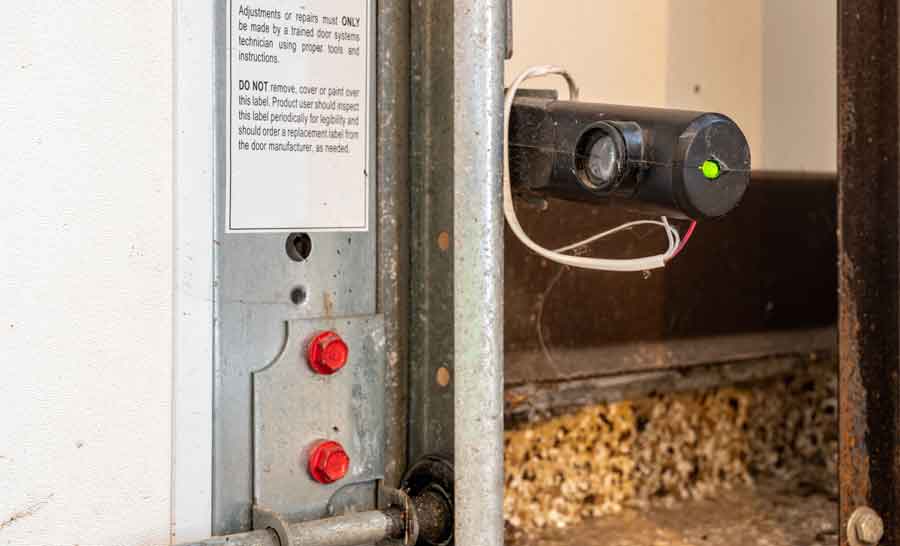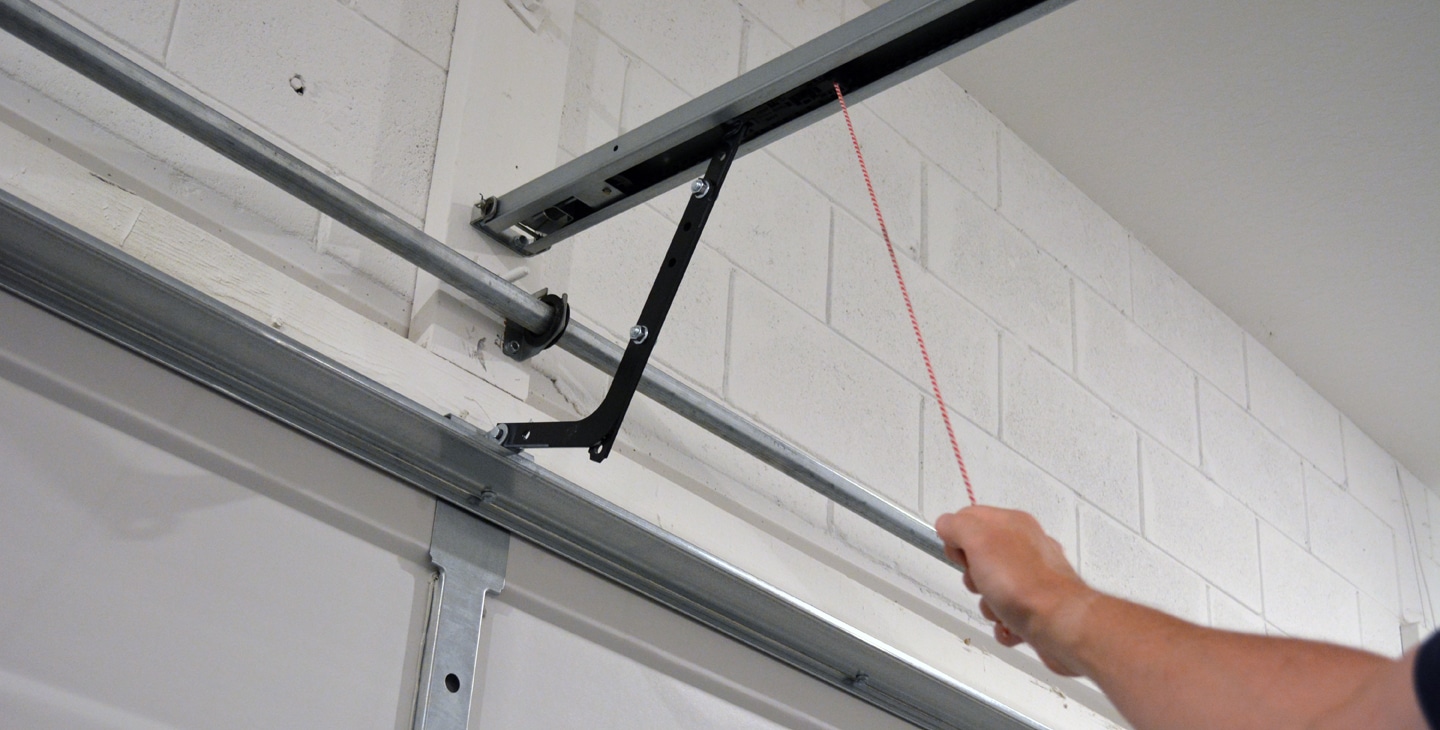Your garage door opener has sensors that automatically stop the door if something is in the way. In theory, it’s there to prevent injuries to kids or pets in the path of the door.
More often, something knocks the sensors out of alignment, and they won’t let the door close properly, even if there’s nothing in the way.
It’s frustrating when you’re just trying to get out of the house, but there are ways around this problem.
In this article, we’ll show you how to bypass garage door sensors…and why you should never do it.
Why You Shouldn’t Bypass Garage Door Sensors
The sensors at the bottom of your garage door are a safety feature in automatic garage door openers. They prevent the door from closing if there is an obstruction below it or on its path.
However, these sensors sometimes malfunction, causing your garage door to stop working when there’s nothing wrong with them.
The problem can be as simple as dirt or a bad wiring connection. However, the most common reason for malfunction is that the sensors were knocked out of alignment.
However, some homeowners found a way to bypass the sensors, making their garage doors work again.
Understand, though, that you are taking a risk when you bypass a garage door sensor.
Ignoring the sensor leaves your home vulnerable to burglars and other criminals who may be looking for an easy way into your home. If someone breaks into your home through the garage, they will have direct access to your living space, which could put you and your family at risk.
Additionally, if there is an emergency and you need to get out of your home quickly, bypassing the sensors could prevent the garage door from opening, trapping you inside.
It is important to remember that bypassing garage door sensors is risky and illegal in many places.
For example, U.S. Federal Law UL 325 requires all garage door openers to have working safety sensors installed in the United States.
That means if there’s an accident and you’ve bypassed your garage door sensors, you may be liable for the damage or even face legal trouble.
Before you take the risk of bypassing your garage door sensors, consider the potential consequences. There may be a better way to get what you need without risking your safety and security.
Troubleshooting Your Garage Door Sensors
Before you bypass the sensors or replace the units entirely, you can check a few areas to help you troubleshoot the problem.
Your garage door sensors might stop working if:
- Something is blocking the sensor path
- There are loose wires
- The lenses are dirty
- The sensors aren’t aligned
Let’s talk about each in more detail.
Blocked Sensor Path
Garage door sensors shoot infrared beams across the door’s path to detect obstructions. If something is blocking the beam, it will prevent the door from operating.
This is actually how the sensors were designed to work, so it’s not technically a problem with the sensors.
Check the path to make sure there’s nothing in the way. A blocked sensor path might also occur if direct sunlight hits one of the sensor lenses.
Loose Wires
Check both sensors for loose or damaged wiring. If you can see frayed or exposed wires or wires not attached to anything, that’s likely the issue.
Cut the power to the garage door opener at your fuse box. Then, you can reconnect or replace the wires without electrocuting yourself.
Dirty Lenses
If either sensor’s lenses are dirty, it could prevent the beam from registering with the other sensor, causing your garage door not to work correctly.
Usually, cleaning the lenses can fix this issue quickly.
However, be sure not to bump the sensors and knock them out of alignment.
Sensors Not Aligned
Finally, check to see if your sensors line up with each other.
Both sensors will have a set of green & red lights that will show if the sensors have proper alignment.
Usually, if you see a green light on both sensors, they’re aligned properly. If one or both sensors have a red light, they’re out of alignment.
If none of these troubleshooting measures work, you will have to bypass your garage door sensors.

How to Bypass Garage Door Sensors
There are three main steps to follow when trying to bypass garage door sensors:
- Prop open your door
- Turn on manual mode
- Close/open the garage door manually
1. Propping Open Your Door
This step is important only if your door is open and you can’t close.
I recommend grabbing a buddy to hold the door open while you work. Alternatively, if your garage door has a deadbolt or other kind of lock, that will help you complete this step safely.
If you need to use a physical prop, it can be anything capable of bearing the garage door’s weight. For instance, a ladder, table, or garage stool will suffice. You can also use wooden planks or blocks, anything sturdy and won’t budge if bumped.
After the prop is safely positioned, you can release the door so it rests gently on top.
2. Turn On Manual Mode
You can turn on the manual mode with your garage door safely propped open or completely closed.
To do this, locate your manual release cord or emergency release cord. It should look like a red string hanging from the door trolley.

Pull the release cord downwards in the direction of your garage door motor.
This will disconnect your door trolley from the automatic opener carriage, allowing the garage door to move up and down manually.
The automatic opener carriage is responsible for lifting and lowering your garage door.
Once disconnected from the door trolley, it no longer controls the garage door position, and you can raise or lower the door yourself.
3. Close/Open the Door Manually
If you need to close or open your door, you can now do so. If you have your door propped open, ask your friend to hold it while you remove the prop. Then, you can lower it to the ground gently.
To stop using manual mode, get someone to open your garage door while you pull the manual release cord toward your garage door entrance.
This will reconnect the door trolley with the opener carriage so you can open the door with the press of a button again.
How to Bypass Garage Door Sensors Permanently
If you need a permanent solution for bypassing garage door sensors, you’ll need to do some electrical work.
Note that this solution requires that your sensors are still working. The goal is to trick the sensors into thinking they’re operating normally, even though they won’t be.
So, if you want to bypass them permanently because they are faulty, you are better off simply replacing them.
Even if you have an older garage door opener, there are universal garage door sensors that work with most brands.
There are four main steps to permanently bypassing garage door sensors:
- Cut the wires
- Tape the sensors together
- Rewire the sensors
- Store the sensors
1. Cutting the Wires
First, close the garage door and disrupt the power supply to the automatic door opener. If you don’t disconnect the power, you risk electrocuting yourself.
Using wire cutters, cut the wires of the garage door sensors so that you have about five inches of wire still attached.
Then, seal off the ends of the wires attached to the house with electrical tape.
2. Taping the Sensors Together
Position the sensors so the eyes look at each other and tape them securely with electrical tape.
3. Rewiring the Sensors
You must rewire the sensors’ cut wires directly to the garage door opener. You’ll need a ladder to see the door opener wires to do this.
The garage door opener should have four separate holes for wire connections. These holes will be recognizable by the colored blocks that host them. The blocks will be red, white, white, and black or gray from left to right.
Ignore the two farthest left blocks, the red and first white.
Look instead at the second white block and the black or gray block. These two blocks will be where you will attach the wires of your sensors.
Now, look at your sensors. They should each have two wires, one white and one black. Wire the two white ones together and connect them to the white block on the door opener. Wire the two black ones together and connect them into the black or gray block.
Now, your sensors have a new connection to your garage door opener.
4. Storing the Sensors
You don’t want to leave your sensors dangling from the ceiling because your sensors have a new short connection to your door opener. To store them, stack them on top of the opener.
The five inches of wire will give you enough room to lay the sensors safely without any danger of them disconnecting randomly.
Now, this will permanently bypass garage door sensors.
Wrapping It Up
In this article, we’ve shown you how to troubleshoot and even bypass garage door sensors. If nothing seems to help your situation, you can always disconnect or replace your sensors.
Calling a certified garage door technician can repair your unit while keeping you safe from electrical mishaps.
If you’re not confident with your wiring ability, get someone to look at your garage door for the best fix possible.
